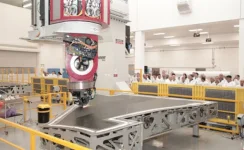- Views: 8K
- Replies: 48

The Indian Air Force (IAF) is facing a critical juncture as it grapples with the pressing need to modernize its aging fighter jet fleet. While ambitious indigenous programs like the TEDBF and AMCA hold promise, the immediate reality demands urgent action.
The Multi-Role Fighter Aircraft (MRFA) tender, aimed at acquiring 114 new jets, has become a symbol of this urgency, yet it has languished in bureaucratic delays for over a decade.
As Prime Minister Modi embarks on his third term, experts stress that the time for decisive action is now. This is not merely about buying new jets; it's about safeguarding India's skies and ensuring national security.
Streamlining the procurement process, prioritizing domestic manufacturing under "Make in India," and ensuring cost-efficiency and lifecycle support are key to resolving this issue. Additionally, the chosen jets must seamlessly integrate with existing IAF systems and be adaptable to future upgrades.
While indigenous programs like the TEDBF and AMCA represent India's long-term aspirations, the MRFA program serves as a critical bridge to maintain the IAF's operational readiness. Hindustan Aeronautics Limited (HAL), already engaged in multiple projects, cannot immediately meet the demand for new jets. The MRFA tender, with its focus on domestic manufacturing through private sector or Indian subsidiaries of foreign OEMs, offers a viable solution.
The government's focus on clearing the Acceptance of Necessity (AoN) for the MRFA program and allocating sufficient budgetary resources is crucial. Exploring alternative funding mechanisms like deferred payment plans or defense bonds can further mitigate financial constraints.
With geopolitical tensions on the rise, a robust and modern fighter fleet is not a luxury but a strategic necessity for India. The MRFA program, with its emphasis on swift procurement, domestic manufacturing, cost-efficiency, and technological integration, is the most practical way to address this urgent need.
By taking decisive action now, the government can not only bolster the IAF's capabilities but also lay the groundwork for a thriving domestic aerospace industry. The stakes are high, but the opportunity for transformation is equally significant.

